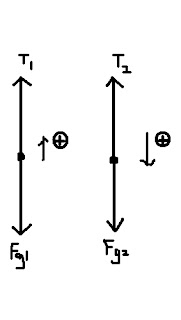First of all, who is Newton? According to Encylcopedia Britannica, Newton was a English physicist, mathematician, astronomer and philosopher. He is also considered by many people to be one of the most influential people in human history. Throughout his lifetime, he discovered many new things and created new scientific laws. Among which were his three laws of motion:
1st Law: Inertia
Inertia is a term used by people to describe the tendency for an object to resist a change in motion. In everyday terms, the 1st law can be basically simplified into this: an object at rest will stay at rest, forever, as long as nothing pushes or pulls on it. An object in motion will stay in motion, traveling in a straight line, forever, until something pushes or pulls on it. In other words, objects will maintain their motion stationary or moving unless there is an external force. For example, beginner ice skaters find it difficult to stop their motion, unless they crash or fall.
2nd Law: F, m, a
Newton found that force, mass, and acceleration are all related. His second law states that: the acceleration of an object depends inversely on its mass and directly on the unbalanced force applied to it. This creates the equation:
3rd Law: Action=Reaction
Newton's third law applies to an action and a reaction. His law states that: for every action, there is an equal & opposite reaction. Take for example a a person standing on the ground. He is not moving vertically at all. Why does this happen? It happens because there are two forces acting on it and they are equal. First, gravity is applied to the person. However, there is a force that is opposite to gravity operating at the same intensity: the normal force. The third law applies.
Newton Problems
Newton's three laws apply to a plethora of things in this universe. As a result, it is only natural that questions and problems are formed. In this unit, we focus on four types of Newton Problems: Equilibrium, Incline (kinetic and static), Pulley, and Train.
Equilibrium
Assumptions
-no friction
-set positive axes
-Tix=Tiy
a=0
F= ma X component
Fₓ = ma
T1ₓ - T2ₓ = 0
T1ₓ = T2ₓ
Y component
Fy = ma -Fg + T1y + T2y = 0
T1y + T2y = Fg
T1sinB + T2sinA = mg
(T1sinB + T2sinA) / g = m
Inclines
STATIC(object not moving)
Assumptions
- fs = µFn
- a = 0
- +ve axes in the direction of decline
- no air resistance
- no air resistance
KINETIC(object moving)
Assumptions
- fk = µkFn
- aₓ ≠ 0, ay = 0
- +ve in the direction of a
Fy = ma- +ve in the direction of a
- no air resistance
F=ma
Y component
Fy = 0
Fn - Fgy = 0
Fn = Fgy
Fn = Fgcosθ
Fn = mgcosθ
X component
Fₓ = maₓ
Fgₓ - f = maₓ
Fgsinθ - µFn = maₓ
mgsinθ - µmgcosθ = maₓ
(mgsinθ - µmgcosθ) / m = aₓ
Pulleys
Assumptions
- frictionless pulleys + rope
- no air resistance
- multiple FBDs
- positive in direction of a
- T1 = T2
- a of the system is the same
F = ma
Fₓ = ma
Fₓ = 0
Fy = m1ay
m1g - T = m1a (1)
to find m2
F = ma
Fₓ = ma
Fₓ = 0
Fy = m2ay
T - m2g = m2ay (2)
Find a
From (1) T = m1g - m1a (3)
From (2) T = m2a + m2g (4)
m1g - m1a = m2a + m2g
m1g - m2g = m2a + m1a
m1g - m2g = a (m2 + m1)
(m1g - m2g) / (m2 + m1) = a
 |
| Simplified FBD of train system (applies only to a) |
Trains
Assumptions
- 1 FBD for a
- 3 FBDs for T1 and T2
- ay = 0
- a is consistent
- no air resistance
- weightless cables
- weightless cables
- positive in direction of a
F = ma
X component
Fₓ = maₓ
Fₐ - f = maₓ
Fₐ - µmg = maₓ
(Fₐ - µmg) / m = aₓ
Y ComponentFy = may
Fy = 0
Fn - mg = 0
Fn = mg




No comments:
Post a Comment